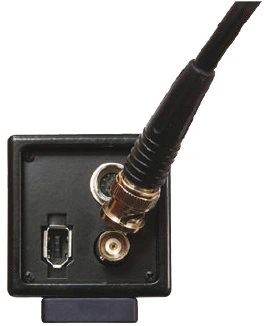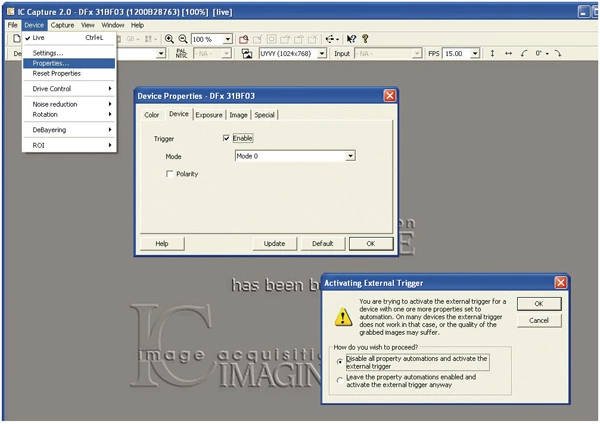Using Trigger and Digital I/Os - Part 1
Published on June 2, 2008 by TIS Marketing.
Please Note: This blog post is part of a series of five posts altogether. The posts include: Part 1, Part 2, Part 3, Part 4 and Part 5.
Introduction
Among other applications, The Imaging Source USB and FireWire CCD cameras are also used for industrial purposes. Most of these applications require a trigger input and general purpose digital I/Os. These features are provided by all USB cameras whose product code contains a "BU" (e.g. DMK 21BU04, DFK 41BU02.H, etc.) and all FireWire cameras whose product code contains a "BF" (e.g. DMK 31BF03-Z, DBK 41BF02, etc.).
The trigger input of all these cameras is realized by a BNC connector and thus very easy to access. The access of the digital I/Os depends very much on the application. Therefore, basically all cameras offer a pin header that can be accessed through a hole in the backplane of the camera.
For all users who prefer to access the digital I/Os using an external connector, The Imaging Source offers cameras with a 12-pin Hirose connector on the backplane. The product code of these cameras ends with the suffix ".H" (e.g. DMK 21BU04.H, DFK 41BF02.H, etc.)
This series of blog posts describes the use of all The Imaging Source USB and FireWire CCD cameras that provide an external trigger as well as digital I/Os.

Getting Started
The following steps describe the use of the most commonly used digital input - the trigger:
- Set up the camera as described in the Getting Started document that accompanies the camera.
- Install the software IC Capture as described in the Getting Started document.
- Make sure that the camera works correctly with IC Capture.
- Connect any trigger source, which creates a positive pulse to the camera's BNC connector, as illustrated by the image to the right. The height of the pulse may lie between 3.3 V and 12 V.
- Enable the trigger mode by clicking Device > Properties... > Device > Enable (see the images below). If you encounter the dialog Activation External Trigger, click Disable all property automations... Consequently, set all camera parameters according to the requirements of your application. You can find these parameters in the Device Properties dialog (Device > Properties...):

To be continued...
